Culinary journey of St. Lucia is a mix of the Caribbean’s lively tastes and the island’s green landscapes. Your adventure begins at Castries Market, where fresh mangoes and dasheen leaves fill baskets. It ends at Rodney Bay’s waterfront, where grilled fish smells fill the air. This food tour is more than just eating; it’s a celebration of Caribbean food.
Every dish here tells a story. Think saltfish with green figs, a Creole tradition, or callaloo stews with local herbs. Walking through markets and fishing villages, you see how simple ingredients become amazing meals. This guide shares the stories behind the flavors, from street carts to top restaurants, keeping traditions alive.
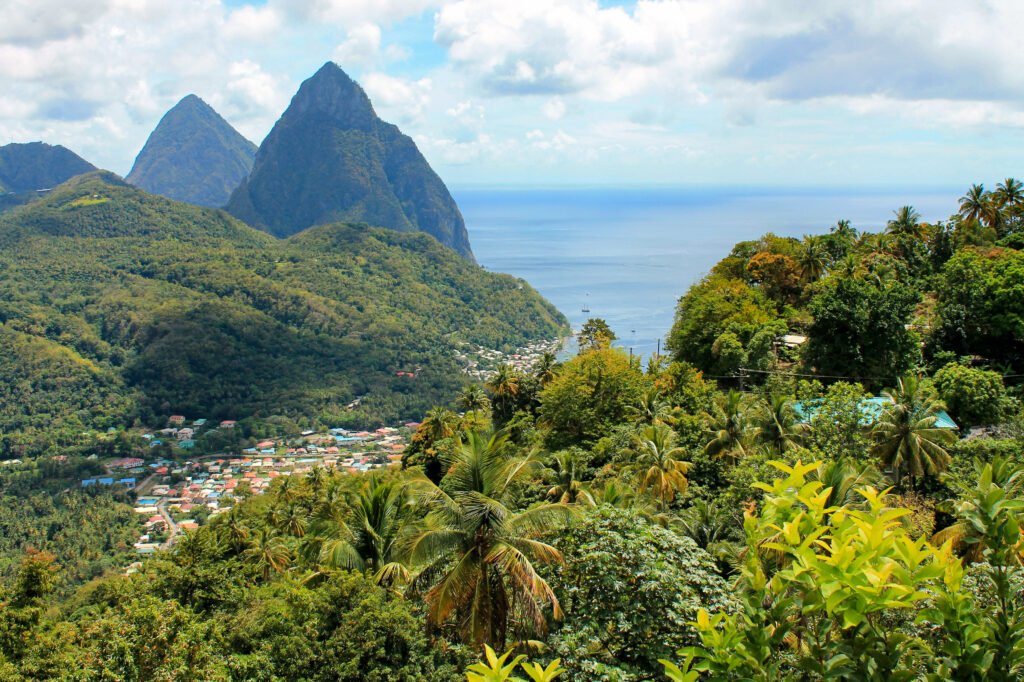
Key Takeaways
- St. Lucia’s cuisine reflects a fusion of French, African, and Indigenous Caribbean influences.
- Castries Market offers the freshest ingredients for a true taste of St. Lucian cuisine.
- Rodney Bay’s dining spots showcase the island’s evolution from traditional cooking to modern Caribbean gastronomy.
- Exploring St. Lucia food tour routes reveals how local chefs honor heritage while innovating with tropical ingredients.
- Every bite tells a story—whether savoring bouyon soup or sipping rum infused with island spices.
Start this journey where every meal opens a window into St. Lucian culture. Learn more about epicurean adventures here.
Introduction to Culinary Travel in St. Lucia
Your first taste of St. Lucia food culture becomes amazing. It is a mix of strong, layered flavors that shows you the island’s history. Here, Caribbean fusion cuisine is more than a trend; it’s a living tradition. Every meal here shares stories of strength, creativity, and cultural exchange.
What Makes St. Lucian Cuisine Unique
St. Lucian cooking is all about fresh ingredients and new ideas. Imagine eating dasheen, smoked fish, and spicy Scotch bonnet peppers. These are the tastes of the land and sea.
Dishes like French-Caribbean food classics, like colombo and accra fritters, show the island’s rich heritage. The use of okra and callaloo from African influence in Caribbean cooking adds depth. Creole cooking methods bring it all together.
The Influence of French, African, and Caribbean Traditions
- French colonial roots brought buttery pastries and crèpes to coastal towns.
- African traditions shaped spice blends and communal cooking practices.
- Caribbean foundations highlight yams, coconut milk, and wood-fired stews.
Map of Our Gastronomic Journey
Your adventure starts in Castries, where the market is full of life. Vendors add nutmeg to stews. From there, you head north along the coast, visiting hidden beachside eateries where Caribbean fusion cuisine reimagines old favorites. Your journey ends at Rodney Bay, where chefs mix ancient methods with modern twists.
Planning Your St. Lucia Food Adventure
The art of enjoying St. Lucia’s flavors starts with timing and planning. Over the years, you find that the island’s food scene matches the seasons and traditions. This makes every trip special.
Best Time to Visit for Food Enthusiasts
When to visit St. Lucia depends on food festivals and harvests. The Food & Rum Festival in October is a highlight, with chef events and street food. The dry season from December to April is perfect for market visits.
For a unique experience, visit in September for the cocoa harvest. You can take farm tours then.
Recommended Duration for a Complete Culinary Experience
Seven to ten days is ideal for exploring flavors. This time allows you to:
- Enjoy slow mornings at Castries Market, smelling fresh dasheen soup and nutmeg
- Experience weekend cookouts in Soufrière’s fishing villages
- Take day trips to Morne Coubaril’s chocolate farms and Rodney Bay’s seafood shacks
Transportation Options Between Culinary Hotspots in St. Lucia
Getting around needs a mix of adventure and practicality. Here are the best ways:
| Option | Flavors | Consider |
|---|---|---|
| Rental Cars | Freedom to chase sudden cravings for accrant in hidden villages | Left-side driving rules |
| Local Buses | Witnessing life’s rhythms as you ride past banana plantations | Schedule flexibility |
| Water Taxis | Crossing the bay to lambi dinners with ocean views | Coastal routes only |
For help planning, our experts create St. Lucia travel planning itineraries. They mix rum tours with fishing village meals.
Castries Market: The Heart of Local Flavors
Walking through Castries Market St. Lucia is like stepping into the island’s culinary soul. The air fills with chatter and the smell of fresh produce St. Lucia. You’ll see purple dasheen, golden yams, and mangoes dripping with juice. This market is more than a place to shop; it’s where the island’s tastes and tales meet.
You see fishermen bring in mahi-mahi, still wet from the sea. Spice vendors show off their scotch bonnet pepper paste with excitement. It’s a place where stories and flavors blend together.
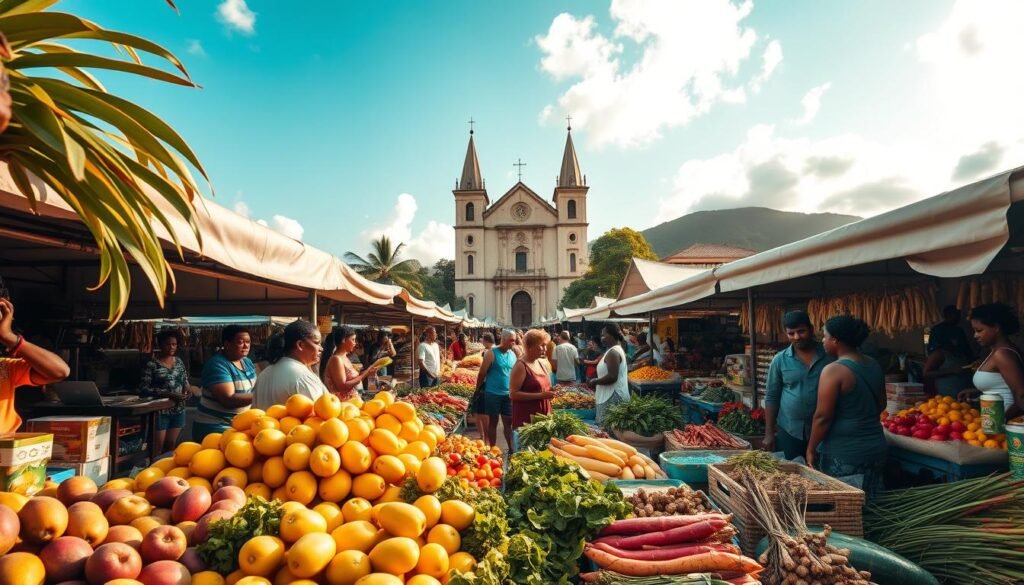
Shopping here is a journey for your senses. You’ll find baskets of callaloo leaves, hinting at soups cooking over fires. A vendor shows you breadfruit, explains its role in traditional dishes. The market’s vibe changes with the day: mornings are busy with fishermen and farmers, while afternoons are fills with spices and baked goods. Here’s what you’ll find:
- Fishmongers showing off the day’s catch, fresh from the sea
- Stalls full of fresh produce St. Lucia like star apples and soursops
- Handmade cassava bread, still warm from clay ovens
A table of local ingredients shows their culinary power:
| Ingredient | Local Use |
|---|---|
| Christophene | Stewed with coconut milk in hearty stews |
| Breadfruit | Roasted, sliced into chips, or mashed as a side |
| Scotch bonnet | Infuses stews, marinades, and the iconic “jack sauce” |
This market is where St. Lucia’s flavors start. Every stall is a doorway to the island’s table. When you return, you take home more than just groceries. You carry the essence of a culture that values nourishment and shared stories.
Navigating the Vendor Stalls at Castries Market
The heart of Castries Market is a maze of stalls. Each corner has its own tale. Let your senses explore aisles filled with spices, tropical fruits, and the lively market vendors. Start your journey at dawn, when the market buzzes with excitement.
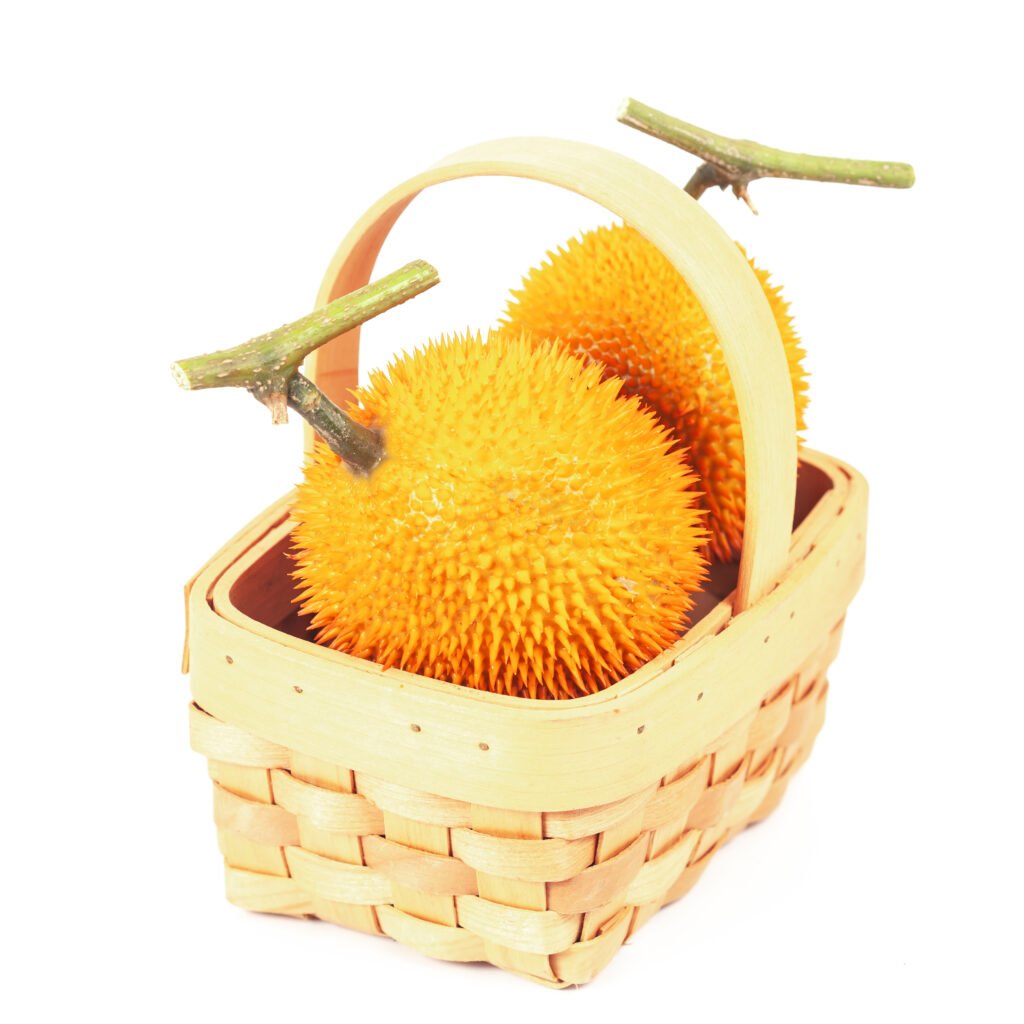
Look into baskets of golden jackfruit, perfect for desserts. Try the tart-sweet star apples. The soursop’s velvety segments make great chilled drinks. For spices, feel the freshly cracked nutmeg and cinnamon sticks. Ask vendors about unique spices like bois bandé, used in cooking and folklore.
Interacting with Local Vendors
Talk to vendors like Madame Marie and Uncle Pierre. They’ll share tips on mango pepper sauce and turmeric with fish. Their knowledge makes shopping a learning experience. When they give you an extra lime, it’s a sign of trust.
“Take home what you love, but always taste first.”
Listen to them, and your choices will show the island’s heart.
Best Days and Times to Visit
Weekends are the best for freshness. Saturdays before 10 AM for fish and fruits; Thursdays for spices. Weekdays afternoons are quieter, perfect for a relaxed visit. Arrive early to see farmers unloading crates of callaloo leaves and mangoes.
Authentic Street Food Experiences Near Castries in St. Lucia
Walking the streets near Castries, you’ll catch the smell of St. Lucia street food. Just a short walk from the market, food vendors turn simple carts into kitchens. They serve Caribbean street eats that share the island’s stories.
Top pick is accras, crispy salt cod fritters, and bakes. These soft bread pockets are filled with cheese or salted cod. They melt in your mouth.
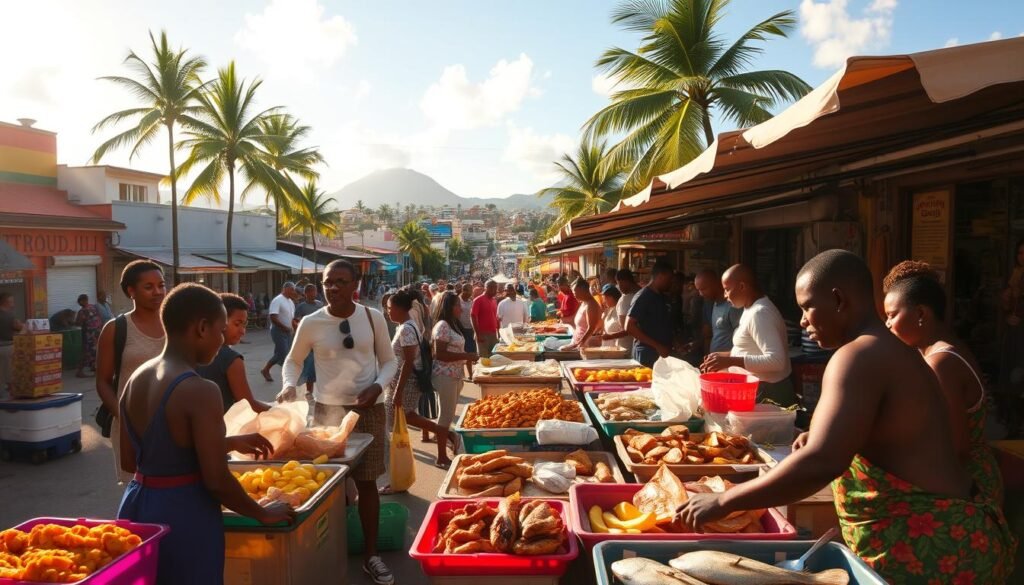
At Columbus Square, the air buzzes with midday talks. The smell of grilled chicken and fish, seasoned with island spices, fills the air. Near the courthouse, a vendor offers bouillon, a soup with okra, dumplings, and fresh fish. It’s served in reused containers, offering a warm, comforting meal.
For breakfast, you look for cocoa tea, a spiced chocolate drink. It’s often paired with warm floats—thick bread rolls split and buttered. These treats are simple yet cherished by locals. To find them, you can ask hotel staff or fishermen at the docks. They point you to secret spots where every meal is a shared story.
Every Caribbean street eats experience teaches you about resilience and joy. The flavors here are humble yet carry deep traditions. Follow the smoke, the chatter, and the crowds. This is where St. Lucia’s heart beats strongest.
Traditional St. Lucia Dishes You Can’t Miss
Every spoonful of St. Lucian cooking tells a story. From bustling markets to family kitchens, St. Lucia traditional food carries the island’s soul. To savor its essence, seek out dishes where heritage meets flavor. Begin with the St. Lucian national dish—a revelation that blends Old World and New World traditions.
Green Fig and Saltfish: The National Dish
Your first encounter with “green fig” leaves you curious—until you learn it’s unripe plantains. The St. Lucian national dish layers smoky salted cod with caramelized onions and peppers. Its savory depth shows the island’s resourceful cooking.
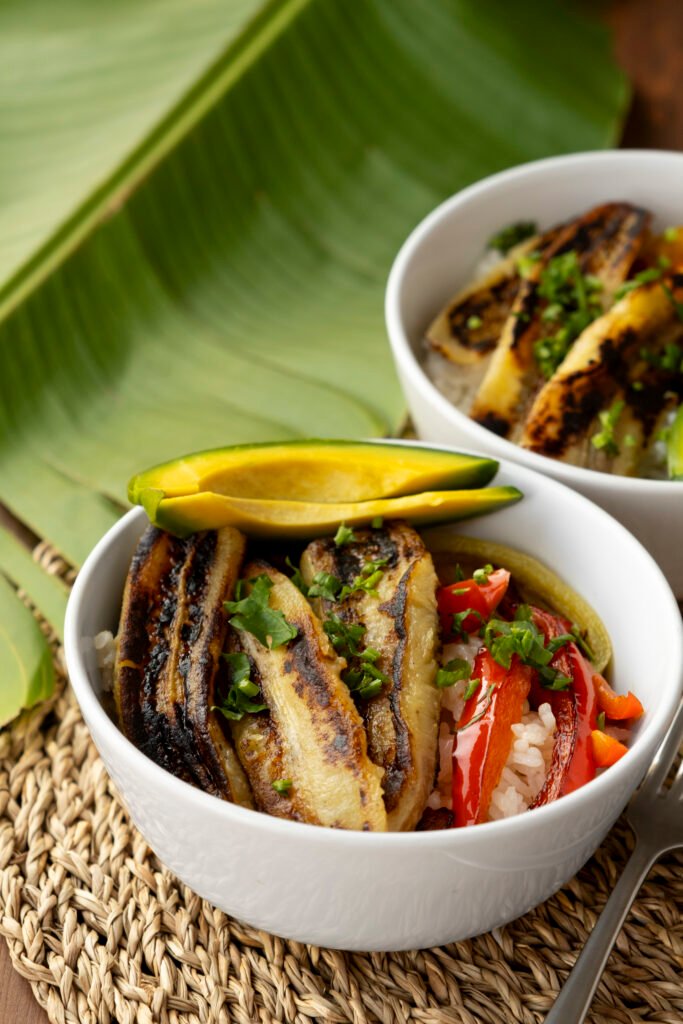
Tasting it, you can taste resilience and adaptation. This dish was born from colonial trade yet is uniquely St. Lucian.
Bouyon and Callaloo Soup
- Bouyon’s herbal broth simmers with herbs like bogue and culantro, a rustic broth that warms like a hug.
- Callaloo soup transforms leafy dasheen greens into a velvety base, often spiced with crab or coconut milk.
Lambi (Conch) and Caribbean Seafood Dishes
Coastal villages showcase Caribbean seafood dishes at their finest. Grilled lambi melts on the tongue, its briny sweetness unmatched. Don’t miss coconut-crusted cod—a modern take on timeless flavors.
These dishes mirror the island’s seafaring spirit. The ocean’s bounty becomes art on the plate.
Seek out authentic St. Lucian recipes passed down through generations. Each bite is a promise of the island’s culinary heart, waiting to be discovered beyond tourist menus.
Moving North in St. Lucia: Culinary Stops Between Castries and Rodney Bay
As you head north, the drive from Castries to Rodney Bay is a feast for the senses. The air is filled with the smell of grilled seafood. Every mile beats with the rhythm of island life. This journey is not just a way to get from one place to another. It’s a path lined with St. Lucia food stops where the island’s flavors come alive.

Gros Islet Fish Fry: A Friday Night Institution
On Fridays, Gros Islet comes alive. The Gros Islet Fish Fry turns into a lively feast. Fishermen cook the day’s catch over open fires. You enjoy mahi-mahi and kingfish, seasoned with salt and pepper, with boiled provisions and a cold Piton beer.
The music plays, and the crowd laughs. The crackle of flames adds to the celebration. It’s a feast that’s as much about joy as it is about food.
Hidden Gems Along the Coastal Route
Between the towns, hidden gems await. In Choc Bay, a vendor’s accras de morue—golden fritters bursting with salt cod—are a revelation. In Corinth, a family kitchen serves oil down, its coconut-scented broth filled with breadfruit and okra.
These spots are more than just places to eat. They’re windows into everyday island life.
Let the road guide you. Pull over where the line forms, where the scent of stewed meats lingers, or where a signless shack draws crowds. This is where St. Lucia’s soul meets its plate.
Rodney Bay’s Diverse Dining Scene

Walking Rodney Bay’s marina, you catch the scent of mahi-mahi. The turquoise water holds a world of flavors. Here, upscale dining St. Lucia meets beachfront ease. The best restaurants in Rodney Bay blend international cuisine St. Lucia with island spirit.
At sunset, you enjoy grilled conch fritters and later, a cliffside bistro’s tasting menu. Chefs here mix tradition with innovation. For example, Rodney Bay restaurants like La Vue turn callaloo into creamy soups. They also serve fish with a jerk glaze, showing how heritage and new ideas can meet.
| Type | Spotlight | Example |
|---|---|---|
| Casual | Beachfront grills | Lobster tacos at Beachcomber’s Shack |
| Modern | Marina fine dining | Coral Breeze’s coconut-crusted mahi-mahi |
| Family | Creole classics | Coral’s Kitchen in Gros Islet |
“We use volcanic soil herbs from Vieux Fort farms to balance global techniques,” Chef Marie tells you at her international cuisine St. Lucia hotspot. The quote captures Rodney Bay’s spirit—every dish tells a story of cross-cultural exchange. For travelers craving both discovery and comfort, this bay offers flavors as layered as the island itself.
Farm-to-Table Experiences in Northern St. Lucia
Just beyond Rodney Bay’s bustling waterfront lies a culinary story. It’s rooted in soil and seasonality. Northern St. Lucia’s volcanic earth nurtures a farm-to-table movement.
Organic farming St. Lucia practices transform landscapes into edible art. Your visit to a hidden farm high above the coast reveals rows of heirloom vegetables. Orchards are bursting with rare citrus—a testament to organic farming St. Lucia’s quiet revolution.
Local Farms and Markets
Walking through dewy morning fields, you learn how microclimates here coax life from volcanic soil. Farms like the one run by a former banker-turned-agriculturist now host St. Lucia farm tours. They showcase heirloom okra and chili varieties grown without synthetic inputs.
The Gros Islet farmers’ market becomes a weekly celebration of this ethos. Baskets spill with sun-ripened mangoes and baskets of wild herbs gathered by local women.
Restaurants Championing Sustainable Cuisine
These farms feed directly into kitchens where sustainable restaurants St. Lucia craft menus. Menus change with harvest cycles. One beachfront eatery you visit sources fish from nearby coves and vegetables from partnerships stretching from Morne Diablotin’s slopes to the northern coasts.
Their chef explains, “When ingredients dictate the menu, every plate becomes a taste of terroir.”
“Every seed tells a story of resilience,” says one grower as you sample honey from hives pollinating wild ginger blossoms. This philosophy echoes across farm-to table Caribbean initiatives here, where flavor and ecology are inseparable.
From sun-warmed guava preserves to dishes built from daily harvests, this region’s food culture thrives. It thrives on transparency and tradition. Whether joining a St. Lucia farm tour or savoring a meal built from morning’s catch, the journey from soil to spoon feels alive with purpose.
Sweet Endings: Desserts and Tropical Fruits of St. Lucia
Every trip to St. Lucia ends with a sweet note. The island’s desserts, made from fresh fruits and cocoa, are a treat.
Coconut-Based Treats
Coconut is a star in St. Lucian desserts. You can find sugar cake, a coconut candy, at local events. Coconut fudge is like a taste of paradise.
Tablet coconut is a favorite of mine. It’s a chewy, caramelized treat with a smoky flavor.
Chocolate and Cocoa Experiences
Chocolate tours in St. Lucia show how cocoa becomes chocolate. At family farms, beans ferment and dry in the sun. They’re then ground into chocolate.
Some farms have a special ritual called the cocoa dance. Beans are polished with bare feet. Try cocoa tea for a taste of the bean’s earthy flavor.
Rum Tastings and Cocktail Culture
Rum is more than a drink in St. Lucia. At St. Lucia Distillers, you can taste aged rums. Local bartenders mix rum with honey or ginger syrup for unique drinks.
At beach bars, a spiced rum can be the perfect ending to a meal. It’s warm and refreshing.
St. Lucian desserts and drinks are a way to experience the island’s spirit. From markets to tours, they invite you to enjoy the island’s sweetness.
Bringing Home the Flavors: Culinary Souvenirs
Leaving St. Lucia without trying its food feels like missing the end of a great book. St. Lucia food souvenirs let you enjoy the island’s flavors long after you leave. Imagine bringing home Caribbean spices or a bottle of hot sauce that reminds you of the island’s lively markets.
Start with the island’s spice blends. Market vendors mix Caribbean spices to buy like nutmeg and allspice. Their smells tell stories of generations of spice artistry. The St. Lucia hot sauce adds a kick to any meal, from a hint of heat to a bold flavor.
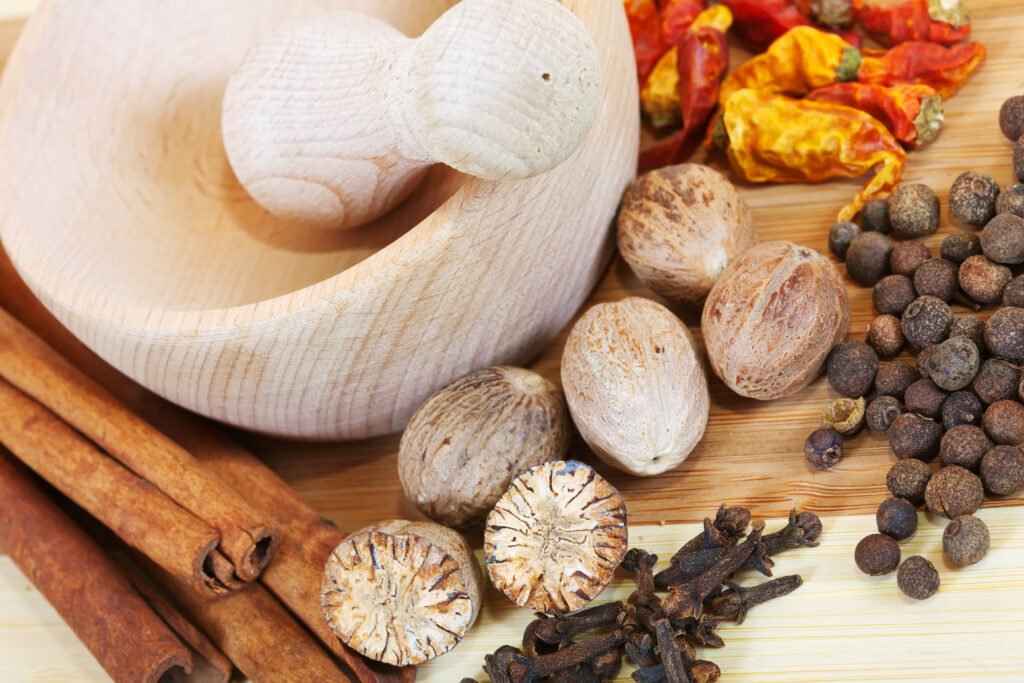
Don’t forget to pick up vacuum-sealed coffee beans or cocoa nibs from local farms.
“Every jar is a story,” says a vendor in Castries, as he hands you a tin of smoked paprika. “These spices taste like the island’s heartbeat.”
Here are some must-bring items:
- Handcrafted St. Lucia hot sauce (try the “Volcano” blend for a smoky kick)
- Small-batch coconut oil infused with vanilla or lime from community cooperatives
- Traditional mauby bark (steep it for that signature bitter-sweet drink)
| Product | Flavor Profile | Best For |
|---|---|---|
| Caribbean spices to buy | Warm, earthy notes of allspice and cinnamon | Seasoning soups or roasted meats |
| St. Lucia hot sauce | Citrusy tang with habanero heat | Weeknight tacos or grilled fish |
| Edible gifts from St. Lucia | Dark chocolate with hints of orange peel | Gift baskets or coffee pairings |
Choose souvenirs that celebrate the island’s culinary spirit. Look for labels that say “locally sourced” or “artisanal.” Even a small jar of sea salt harvested by coastal communities carries the brine of the Atlantic and the pride of its makers. These flavors are more than souvenirs; they’re invitations to keep exploring, one taste at a time.
Conclusion: Embracing the Full Spectrum of St. Lucia Gastronomy
Leaving Castries Market and Rodney Bay, you see St. Lucia’s food culture is rich and diverse. Every green fig and saltfish bite or spiced rum sip shares a story of hard work and creativity. This island’s food is more than just meals; it’s a conversation between land, sea, and people.
St. Lucia’s food scene is full of contrasts. Simple callaloo bowls meet bold, modern dishes. Both celebrate the importance of ingredients and heritage. From street food in Gros Islet to cocoa plantations, visitors dive into traditions that define Caribbean cuisine.
Exploring St. Lucia’s food means being curious. Look beyond resort menus to meet chefs and farmers. It’s not just about tasting; it’s about feeling the island’s history and dreams. Let your food journey in St. Lucia be a celebration of culture and unforgettable flavors.


